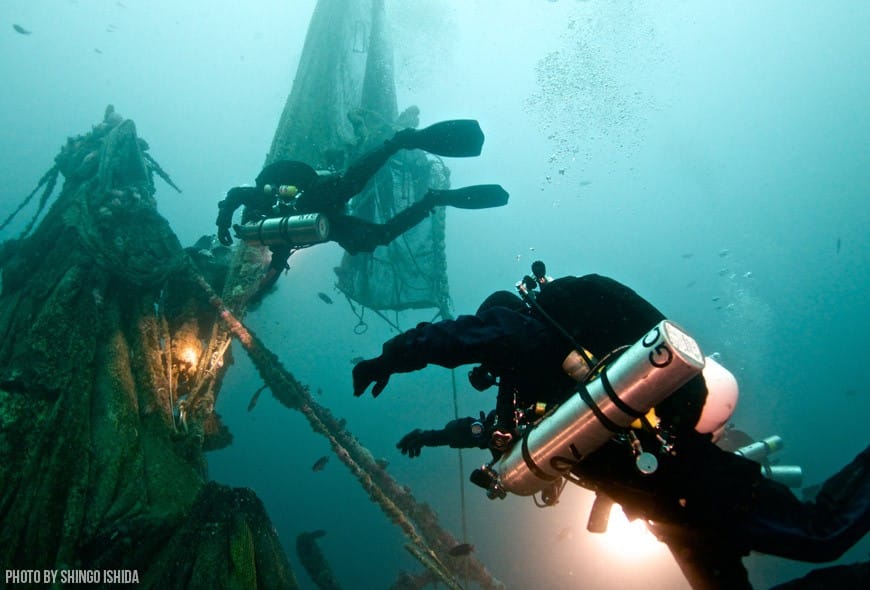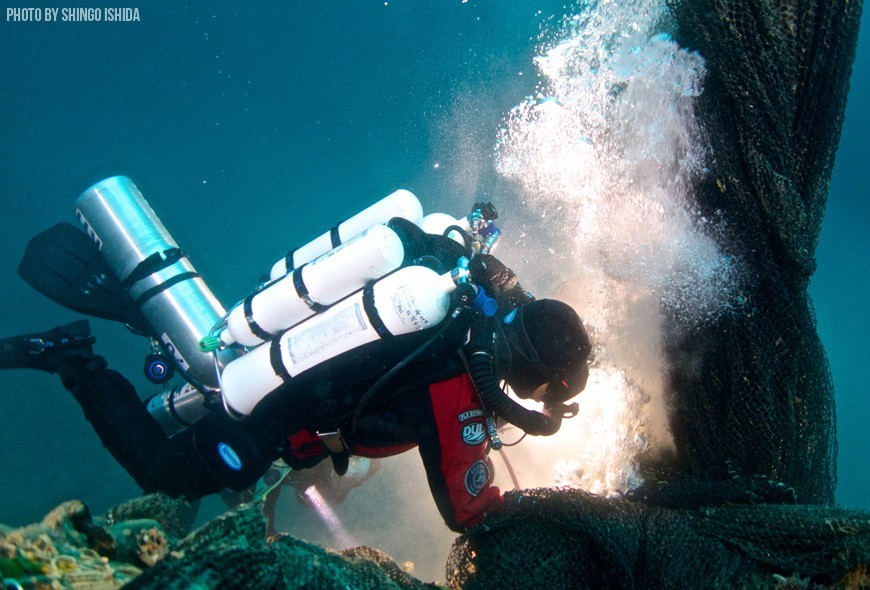When Heather Hamza isn’t working as a nurse anesthetist, she’s an underwater explorer who saves marine life from ghost fishing. Hamza is a certified diver and member of the Global Underwater Explorers Los Angeles. She’s also the USA coordinator of Ghost Fishing, a worldwide non-profit organization dedicated to removing derelict fishing gear that continues to trap and often kill marine life.
The Ghost Fishing Epidemic
Ghost fishing was first brought to the attention of the Food and Agriculture Organization of the United Nations in 1985, but still remains a prominent issue. The trouble begins when an abandoned fishing net traps marine life swimming by. As other creatures swim to the site to eat what has been caught, they also become trapped. When the weight of these nets cause them to collapse, they are swept away by the current, as Chuck Kopczak, curator of Ecology at the California Science Center and member of the Ghost Fishing team explains to MiLLENNiAL.
“They have this sweeping effect like a broom that scours the bottom [of the ocean] clean,” says Kopczak . Because of the size of abandoned fishing nets, and the amount of time it takes them to degrade materials used in their production such as monofilament, they have the potential to cause large-scale and long-lasting damage.
“For decades or centuries these things will be out there wiping out anything that’s in the reach of their sweeping action,” Kopczak adds.
What is being done about it?
Ghost Fishing is actively seeking to prevent further damage caused by derelict gear by getting in the water and cleaning it up, all while documenting what they see.
The divers are highly skilled professionals who have received a unique and specific training that encompasses techniques such as technical diving, diving on a breather, and using lift bags, which are used to move heavy objects from under the water to the surface. On missions, divers face dangers such as compression sickness (also known as “the bends”), entanglement hazards, or worse.
“If you get stuck in a lift bag when it’s rocketing to the surface, it’ll kill you. You’re dead,” Hamza tells us.
Each mission is carefully prepared in advance. If the team is unfamiliar with the site, they will first visit it with cameras to research the depth and extent of a wreck. They even keep model ships, which they use to discuss wrecks before diving.
While one part of the team cuts nets, the other documents the dive, on the lookout particularly for any dead or trapped animals or animals they haven’t seen before.
One of Hamza’s most exciting encounters on a dive? “A great white shark,” she says. Hamza encountered the animal with her husband while cleaning up a shipwreck.
The no-fault approach
There are two types of derelict nets: abandoned nets and lost nets. Abandoned nets are those dumped because they no longer have commercial value, while lost nets are those left on accident, often cut loose because they became entangled in a habitat. Hamza believes that most of the nets that her team has seen fall into the second category.
But as of now in California, there is no way to differentiate between the two. Ghost Fishing advocates for the development of laws that require fishermen to report missing gear. They are looking to the Northwest Straits Commission, who spearheaded for these laws in Washington State, to help get them in place.
“It doesn’t necessarily have to be a punitive thing for [fisherman],” Kopczak suggests. “It’s meant to be a way to say ‘oh hey, we have gear out here, somebody needs to go out and see if they can find it.’”
Northwest Straits agrees. As they state in their program description:
“The Commission takes a no-fault approach to derelict gear removal. Rather than assigning blame for the derelict gear in the marine environment, the Commission focuses on removing existing gear and preventing new gear from entering the water through non-regulatory means.”
How you can help our seas
Ghost Fishing is an all-volunteer organization. Many of the divers are just like Hamza, who works a day job to “support her dive habit.” While the organization receives some funding from Aquafil, their partner in the Healthy Seas initiative who recycles the derelict nets into carpet fibers, Ghost Fishing is in need of donations.
In addition to funding, awareness about ghost fishing is key. Kopczak hopes to aid this by incorporating information into exhibits at the California Science Center, which has seen 1.5 million visitors in the past two years. The organization is also willing to give presentations at schools and has even had high school students come aboard with them to help.
But the daily decision to look at your diet is one of the most important to sustain marine life.
“We have several volunteers who have stopped eating seafood once they started doing this work,” Hamza says. Because of overfishing, aquatic animals don’t have the chance to reproduce, thus entire generations are wiped out. Even worse, allowable quotas, which limit how much fisherman are allowed to catch, don’t take into account animals killed by ghost nets.
By decreasing the demand for fish, Hamza believes we can help alleviate the problem. For those who are aware of ghost fishing’s impact but are hesitant to consider a vegetarian diet, she has a word of advice:
“I think it boils down to a very simple question: ‘am I OK with this?’”
To learn more about Ghost Fishing visit GhostFishing.org.


